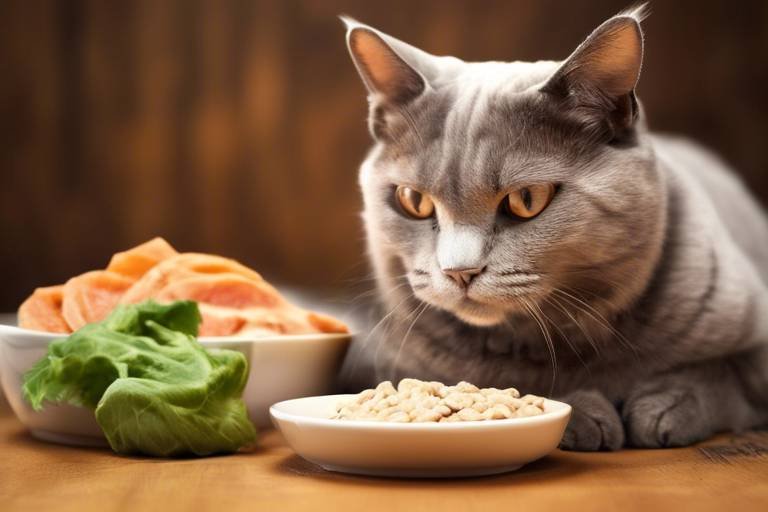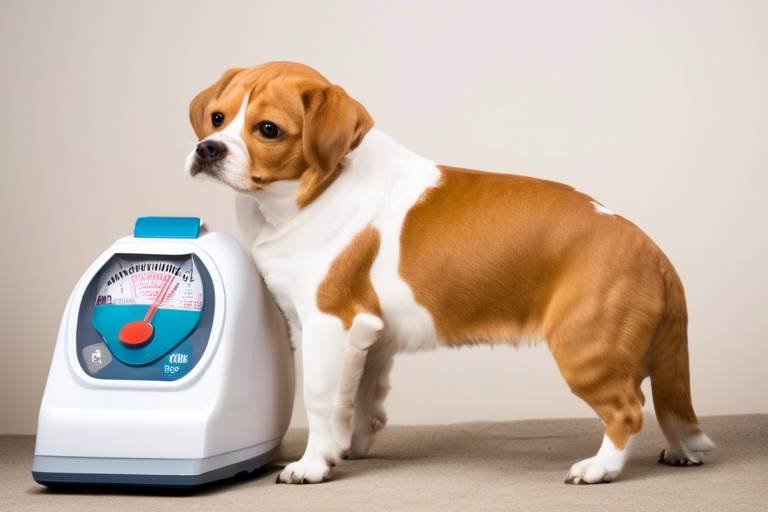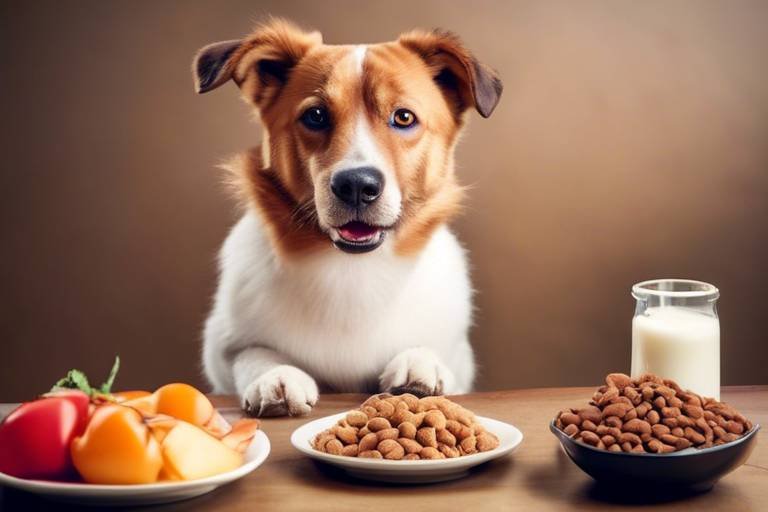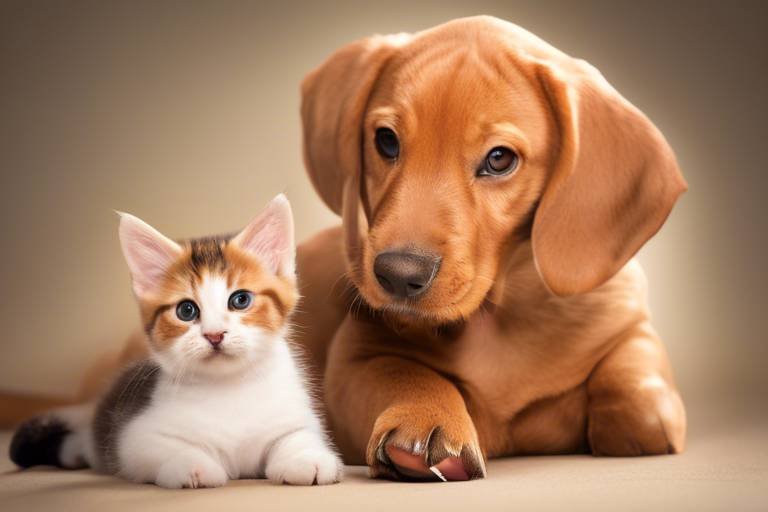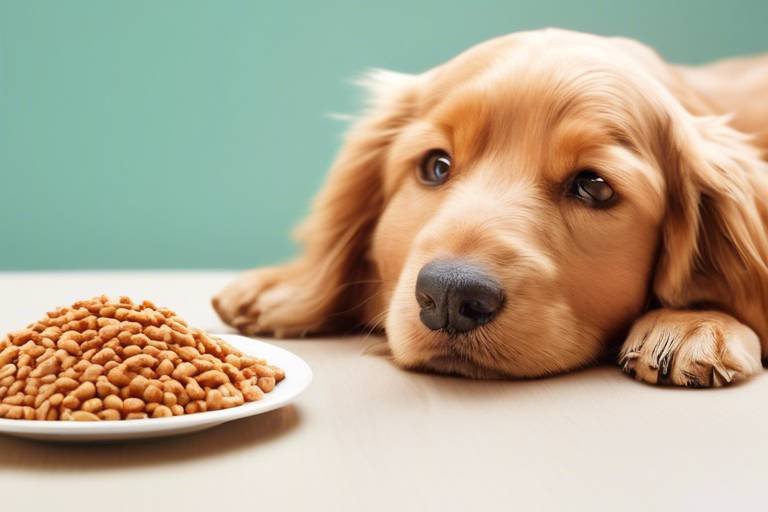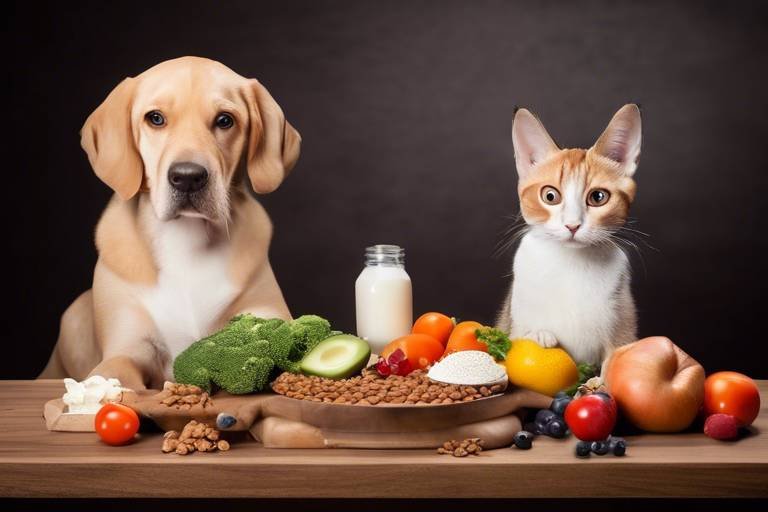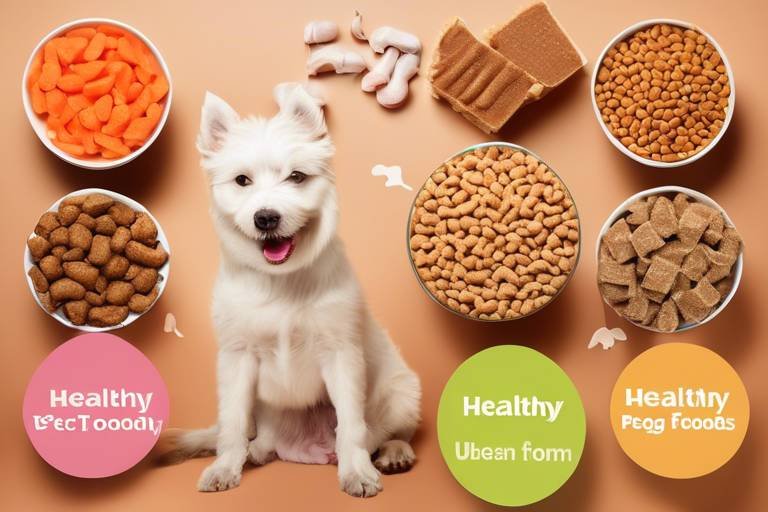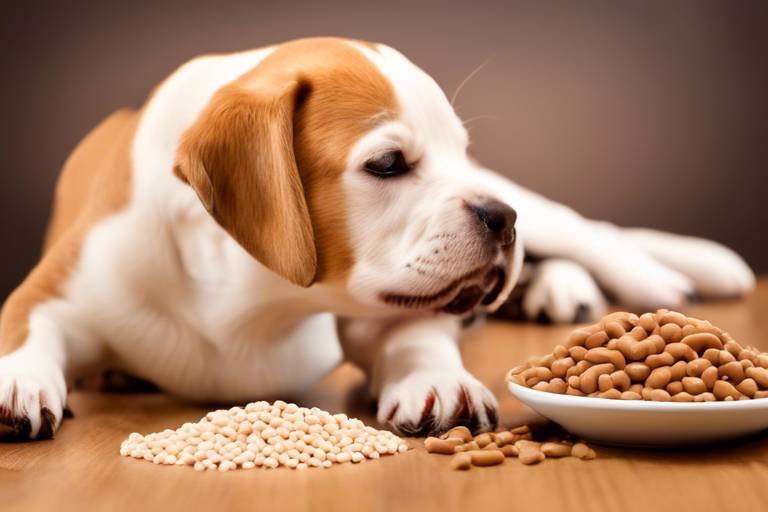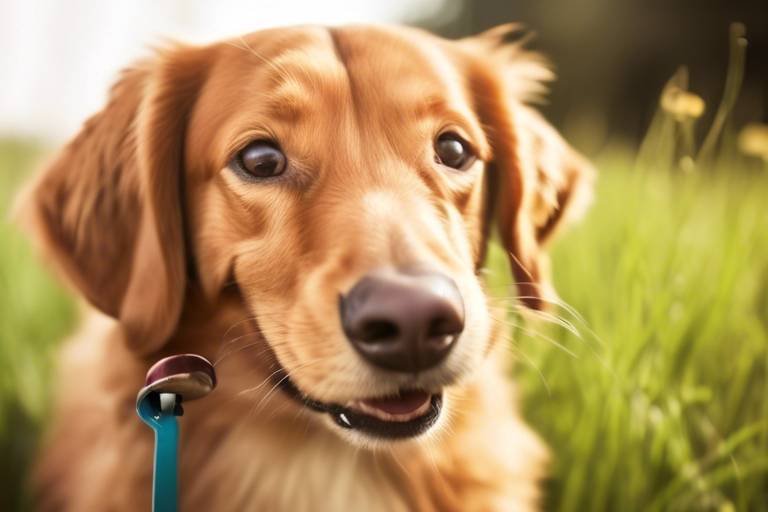How to Choose the Right Food for Cats with Health Issues
Choosing the right food for your feline friend, especially when they face health issues, can feel like navigating through a maze. It’s not just about picking any random kibble off the shelf; it’s about understanding your cat’s unique needs and ensuring they receive the right nutrients to thrive. Cats, like us, can suffer from various health problems that can significantly affect their dietary requirements. Whether it’s diabetes, kidney disease, or allergies, each condition calls for a tailored approach to nutrition. So, how do you ensure your cat is getting the best possible diet? Let’s dive into the essentials of selecting the right food that caters not only to their taste buds but also to their health needs.
Before we can make informed decisions about your cat's diet, it’s crucial to understand the common health issues that can arise. Conditions such as diabetes, kidney disease, and food allergies are prevalent among felines and can greatly influence their nutritional needs. For instance, cats with diabetes require a diet that is low in carbohydrates to help manage their blood sugar levels. On the other hand, cats suffering from kidney disease may benefit from a diet that is lower in protein but higher in moisture to support kidney function. The key takeaway here is that different health issues necessitate different dietary approaches, and being aware of these can make a world of difference in your cat’s well-being.
Now that we have a grasp on common health issues, let’s talk about the importance of consulting with a veterinarian. Your vet is your best ally when it comes to diagnosing health problems and providing tailored dietary recommendations. Just like a doctor can prescribe the right medication based on your symptoms, a veterinarian can recommend a diet that aligns with your cat's specific needs. They might suggest specialized diets or specific brands known for their quality and nutritional value. Always remember, what works for one cat may not work for another, so personalized advice is invaluable.
Recognizing symptoms early can lead to timely intervention, which is crucial for your cat’s health. Common signs that may indicate underlying health problems include:
- Behavioral Changes: If your usually playful cat becomes lethargic or shows signs of aggression, this could signal a health issue.
- Physical Symptoms: Weight loss, changes in appetite, or excessive thirst are red flags that shouldn’t be ignored.
Understanding these changes can help you identify when your cat may need a dietary adjustment. For instance, if you notice your cat is losing weight despite eating normally, it might be time to consult your veterinarian.
Diagnostic tests can provide valuable insights into your cat's health and inform dietary decisions. Tests such as blood work, urinalysis, and imaging can help pinpoint specific health issues, allowing for a more focused dietary approach. For example, a blood test might reveal kidney function levels, guiding you to choose a food that supports kidney health. Remember, knowledge is power, and understanding your cat’s health status can lead to better food choices.
When it comes to selecting the appropriate type of food—dry, wet, or raw—the impact on your cat's health can be significant. Each option has its pros and cons:
| Food Type | Pros | Cons |
|---|---|---|
| Dry Food | Convenient, helps with dental health | Lower moisture content |
| Wet Food | Higher moisture, more palatable | Can be more expensive |
| Raw Food | Natural diet, high protein | Risk of bacteria, requires careful preparation |
Understanding these pros and cons will help you make an informed decision based on your cat's health needs and preferences.
Certain health conditions require specialized diets. For example, cats with urinary tract issues might benefit from a diet that promotes urinary health, while those needing to manage their weight could require calorie-controlled options. It’s essential to choose a diet formulated for your cat’s specific condition, as this can significantly improve their quality of life.
Understanding pet food labels is essential for making informed choices. Look for high-quality ingredients and avoid fillers that offer little nutritional value. Pay attention to the first few ingredients listed, as these make up the bulk of the food. Familiarize yourself with terms like “grain-free” or “limited ingredient” diets, which may be beneficial for cats with allergies.
After selecting a diet, monitoring your cat's response is vital. Keep an eye on their behavior, weight, and overall health. If you notice any adverse reactions or if your cat seems to be struggling with the new diet, don’t hesitate to reach out to your veterinarian for guidance. It’s all about finding the right balance to ensure your furry friend is happy and healthy.
1. How do I know if my cat has a health issue?
Look for behavioral changes, weight fluctuations, or changes in appetite. If you notice anything unusual, consult your veterinarian.
2. Can I switch my cat's food suddenly?
It's best to transition gradually to avoid digestive issues. Mix the new food with the old food over several days.
3. Are there specific brands recommended for cats with health issues?
Yes, consult your veterinarian for recommendations tailored to your cat's specific health needs.
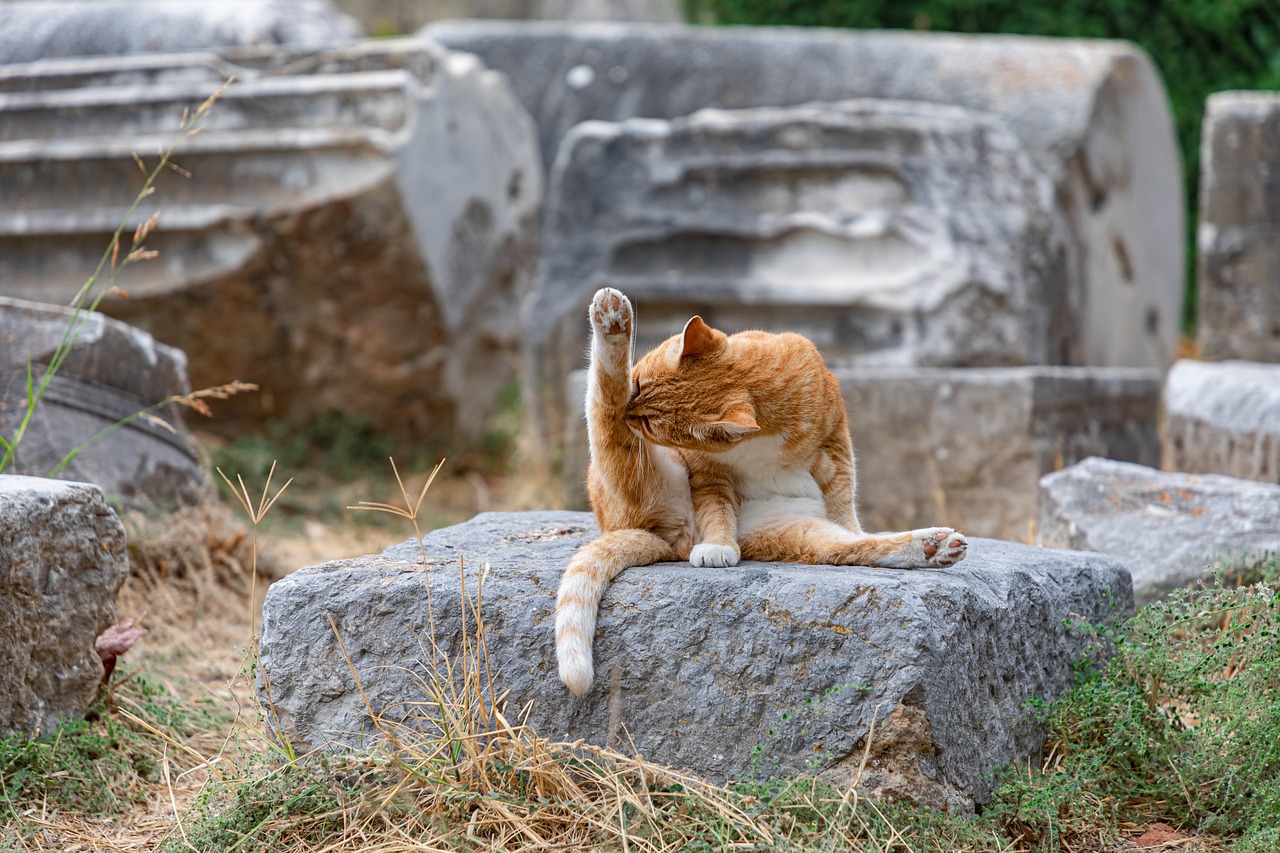
Understanding Common Health Issues in Cats
When it comes to our feline friends, understanding their health is crucial to ensuring they live long, happy lives. Just like humans, cats can face a variety of health challenges that can significantly impact their well-being. Some of the most common health issues in cats include diabetes, kidney disease, and allergies. Each of these conditions not only affects how your cat feels but also influences their dietary needs.
For instance, cats with diabetes require a diet that is low in carbohydrates and high in protein to help manage their blood sugar levels. On the other hand, those suffering from kidney disease may need a diet that is lower in protein and phosphorus to reduce the strain on their kidneys. Allergies can be a bit trickier, as they might require an elimination diet to identify specific food triggers. Understanding these conditions is the first step in providing the right nutrition.
Moreover, recognizing the signs of these health issues early can lead to quicker interventions. Some common symptoms to watch for include:
- Increased thirst and urination - Often linked to diabetes or kidney problems.
- Weight loss - Can indicate diabetes or hyperthyroidism.
- Vomiting or diarrhea - May signal food allergies or gastrointestinal issues.
- Changes in appetite - Could point to a range of health concerns.
Each of these symptoms can serve as a red flag, urging you to consult with a veterinarian. It’s essential to remember that while some symptoms may seem minor, they can be indicative of more serious underlying issues. Therefore, keeping a close eye on your cat’s behavior and health can make a world of difference.
In summary, understanding common health issues in cats is not just about knowing the conditions themselves, but also about recognizing how these issues affect their dietary requirements. By being proactive and observant, you can ensure that your cat receives the appropriate care and nutrition they need to thrive.
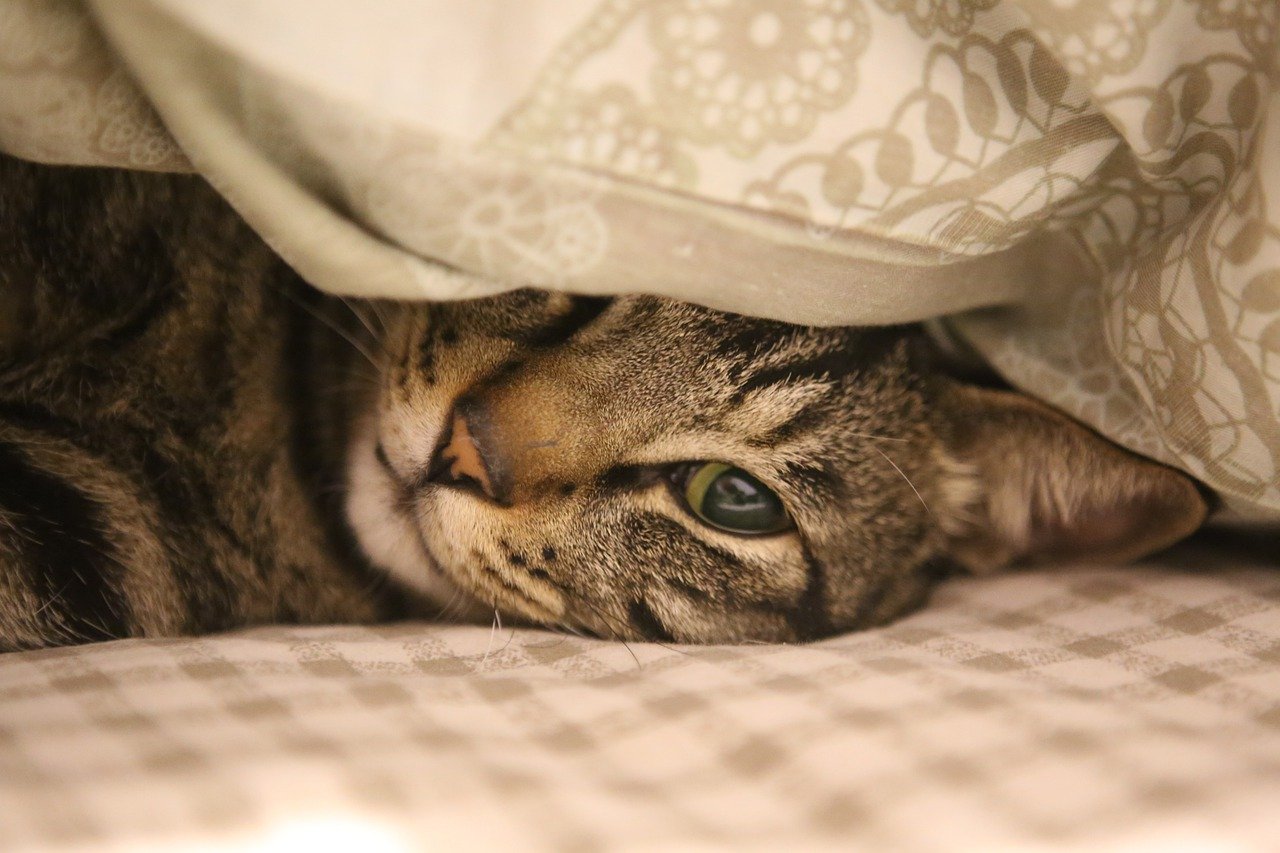
The Importance of Consultation with a Veterinarian
When it comes to your furry friend’s health, **consulting with a veterinarian** is not just a good idea; it’s a necessity! You wouldn’t go to a doctor without first getting a check-up, right? The same principle applies to our beloved cats. A veterinarian can provide crucial insights into your cat’s specific health issues and recommend a tailored dietary plan that meets their unique needs. This is especially important for cats with chronic conditions, as the right food can make a world of difference in their quality of life.
Imagine trying to solve a puzzle without all the pieces; that’s what it’s like attempting to choose the right food for your cat without professional guidance. A veterinarian has the expertise to diagnose health problems accurately and suggest dietary adjustments that can help manage those issues. For instance, if your cat is diagnosed with diabetes, the vet might recommend a high-protein, low-carbohydrate diet to help maintain stable blood sugar levels. Without this specialized advice, you could inadvertently choose a food that exacerbates the problem.
Moreover, regular consultations with your vet allow you to stay informed about the latest developments in feline nutrition and health. Just like humans, cats can be affected by changing dietary trends, and what worked for your pet last year might not be suitable now. A vet can help you navigate these changes, ensuring you’re always making the best choices for your cat’s health.
Recognizing symptoms early can lead to timely intervention. This section discusses common signs that may indicate underlying health problems in your cat.
Alterations in behavior can signal health issues. Understanding these changes can help you identify when your cat may need a dietary adjustment.
Physical symptoms such as weight loss or changes in appetite can indicate health problems. This section explores what to watch for and how it relates to food choices.
Diagnostic tests can provide valuable insights into your cat's health. This section covers common tests and how they inform dietary decisions.
Identifying Symptoms of Health Issues
When it comes to our furry companions, being proactive about their health is crucial. Just like humans, cats can’t verbally express when something feels off, which makes it our responsibility to be vigilant. Recognizing the symptoms of health issues early can mean the difference between a quick fix and a more complicated situation. So, how do you know when your cat might be struggling? Here are some key indicators to watch for:
First off, behavioral changes can be one of the most telling signs. Has your usually playful cat suddenly turned into a couch potato? Or perhaps they’ve become more irritable or withdrawn? These alterations in behavior could indicate underlying health problems that need your attention. For example, a cat that is usually social but starts hiding away may be experiencing discomfort or pain. It’s essential to keep a close eye on their interactions with you and their environment.
Next, let’s talk about physical symptoms. Cats are notorious for hiding pain, but certain physical changes can’t be ignored. If you notice any of the following signs, it might be time to consult a vet:
- Weight Loss: If your cat is shedding pounds without any changes in diet or activity level, this could be a red flag.
- Changes in Appetite: A sudden increase or decrease in food intake can signal health issues.
- Vomiting or Diarrhea: Occasional hairballs are normal, but frequent vomiting or diarrhea can indicate digestive problems.
- Excessive Thirst: Increased water consumption can be a symptom of diabetes or kidney issues.
It's essential to keep a close watch on these signs. Just like a detective piecing together clues, observing your cat's behavior and physical condition can help you uncover potential health issues. Remember, cats are masters at hiding discomfort, so even subtle changes can be significant.
Additionally, monitoring your cat's litter box habits can provide insights into their health. Changes in urination frequency or the appearance of their stool can be indicative of urinary tract issues or gastrointestinal problems. If you notice anything unusual, don’t hesitate to reach out to your veterinarian.
In summary, being aware of both behavioral and physical symptoms is vital in identifying potential health issues in your cat. By staying observant and proactive, you can ensure that your feline friend receives the care they need in a timely manner. After all, a happy cat is a healthy cat!
Q: What should I do if I notice symptoms in my cat?
A: If you observe any concerning symptoms, it’s best to consult your veterinarian as soon as possible for a thorough examination and appropriate recommendations.
Q: How often should I monitor my cat's health?
A: Regularly monitoring your cat’s behavior and physical condition is essential, especially as they age or if they have existing health issues. Monthly checks can be a good practice.
Q: Are there specific signs that indicate a need for immediate veterinary care?
A: Yes, signs such as difficulty breathing, severe lethargy, persistent vomiting, or blood in urine or stool should prompt immediate veterinary attention.
Behavioral Changes
When it comes to our feline friends, behavioral changes can often be the first red flag indicating something is amiss. Cats are creatures of habit; they thrive on routine and familiarity. So, when they start acting out of character, it’s essential to pay close attention. For instance, if your once playful kitty suddenly becomes lethargic or hides away more than usual, it could be a sign of underlying health issues. Just like humans, cats can experience stress and discomfort, which can manifest in their behavior.
One common behavioral change to watch for is a decrease in social interaction. If your cat, who used to curl up on your lap or greet you at the door, starts to shy away or avoids contact, it might be time to investigate further. This withdrawal can indicate pain or discomfort, prompting them to seek solitude. Similarly, increased aggression or irritability can signal that your cat is not feeling well. Just as you might snap at a friend when you’re unwell, your cat may lash out when they're not at their best.
Another significant behavioral shift is changes in eating habits. A cat that suddenly loses interest in food or, conversely, starts eating excessively could be trying to tell you something. Weight loss or gain can be a direct reflection of their health status. For example, a cat that is stressed or in pain may refuse to eat, while one suffering from conditions like diabetes may show increased hunger but still lose weight. These shifts can provide critical clues about what’s going on internally.
Here are some behavioral changes to keep an eye on:
- Increased Hiding: Spending more time in secluded spots.
- Less Grooming: Neglecting their usual grooming habits can indicate discomfort.
- Vocalization Changes: Excessive meowing or growling can signify distress.
- Changes in Litter Box Habits: Avoiding the litter box or changes in urination can be serious warning signs.
Understanding these behavioral cues is crucial for your cat's well-being. If you notice any of these changes, consider consulting with a veterinarian. They can help determine whether these behaviors are linked to health issues and guide you on the best dietary adjustments to make. Remember, your cat relies on you to be their advocate, so staying attuned to their behavior is key in ensuring they lead a healthy and happy life.
Physical Symptoms
When it comes to our feline friends, the phrase “a picture is worth a thousand words” couldn’t be more accurate. Cats are masters at hiding their discomfort, but there are that can reveal underlying health issues. Observing these signs is crucial for any cat owner who wishes to ensure their pet’s well-being. Have you ever noticed your cat behaving differently? Maybe they seem less playful or more lethargic than usual? These subtle changes can often point to something more serious.
One of the first things you might notice is a change in your cat's appetite. Is your furry companion suddenly leaving food in their bowl, or are they ravenously devouring everything in sight? Both scenarios can be alarming. A decreased appetite might indicate dental issues, gastrointestinal problems, or even kidney disease, while an increased appetite could be a sign of diabetes or hyperthyroidism. It’s essential to pay close attention to these eating habits, as they can serve as early warning signs.
Another critical area to monitor is your cat's weight. A sudden weight loss can be a red flag for various health conditions, including cancer, hyperthyroidism, or diabetes. Conversely, if your cat is gaining weight rapidly, it could signal issues like obesity, which can lead to further complications such as joint pain or heart disease. Keeping track of your cat’s weight and body condition is vital, and regular vet check-ups can help you stay ahead of potential problems.
Additionally, changes in grooming habits can be quite telling. Cats are known for their fastidious grooming, so if you notice your cat becoming less groomed or developing patches of fur loss, it could indicate stress, skin allergies, or even hormonal imbalances. On the other hand, excessive grooming can lead to skin irritations and might reflect anxiety or discomfort.
Lastly, keep an eye on your cat’s litter box habits. Changes in urination or defecation can signal serious health issues. For instance, if your cat is straining to urinate or has blood in their urine, it could indicate a urinary tract infection or bladder stones. Alternatively, if they are having diarrhea or constipation, it might point to dietary issues or gastrointestinal disorders. Monitoring these behaviors can provide essential clues to your cat’s health.
In summary, being vigilant about these physical symptoms can help you catch potential health issues early. If you observe any of these signs, don’t hesitate to consult your veterinarian. Remember, your cat relies on you to be their advocate, and early intervention is often the key to successful treatment.
Diagnostic Tests and Their Role
When it comes to ensuring your feline friend is in tip-top shape, diagnostic tests play a crucial role. Just like a detective gathering clues, these tests help veterinarians uncover underlying health issues that might not be immediately visible. Think of it as peeling back the layers of an onion; each layer reveals more about your cat's health status. Common diagnostic tests include blood tests, urinalysis, and imaging techniques like X-rays or ultrasounds. Each of these tests serves a unique purpose and provides valuable insights into your cat’s well-being.
For instance, blood tests can reveal a lot about your cat's organ function, including the liver and kidneys, while urinalysis can help detect urinary tract infections or diabetes. These tests are essential not just for diagnosing existing conditions but also for monitoring your cat's response to dietary changes and treatments. By keeping a close eye on these results, you and your veterinarian can make informed decisions about your cat's diet and overall care.
Here’s a quick breakdown of some common diagnostic tests and what they can tell you about your cat:
| Diagnostic Test | Purpose |
|---|---|
| Blood Test | Assesses organ function and detects diseases like diabetes or hyperthyroidism. |
| Urinalysis | Identifies urinary issues and metabolic disorders. |
| X-Ray | Visualizes bones and internal organs to diagnose injuries or tumors. |
| Ultrasound | Provides images of internal organs and can help identify abnormalities. |
It's important to remember that while diagnostic tests can provide a wealth of information, they are most effective when combined with a thorough physical examination and a detailed history of your cat's health. This holistic approach allows your veterinarian to tailor dietary recommendations that are not only beneficial but also specifically suited to your cat's unique needs. So, the next time you notice your cat acting a bit off, don't hesitate to consult your veterinarian and discuss the possibility of diagnostic testing. It could be the key to unlocking a healthier, happier life for your furry companion.
- How often should I have my cat tested? Regular check-ups are recommended, typically once a year for healthy cats and more frequently for those with known health issues.
- Are diagnostic tests safe for my cat? Yes, most diagnostic tests are non-invasive and safe, but always discuss any concerns with your veterinarian.
- What should I do if my cat's test results are abnormal? Consult your veterinarian immediately for further evaluation and to discuss potential treatment options.
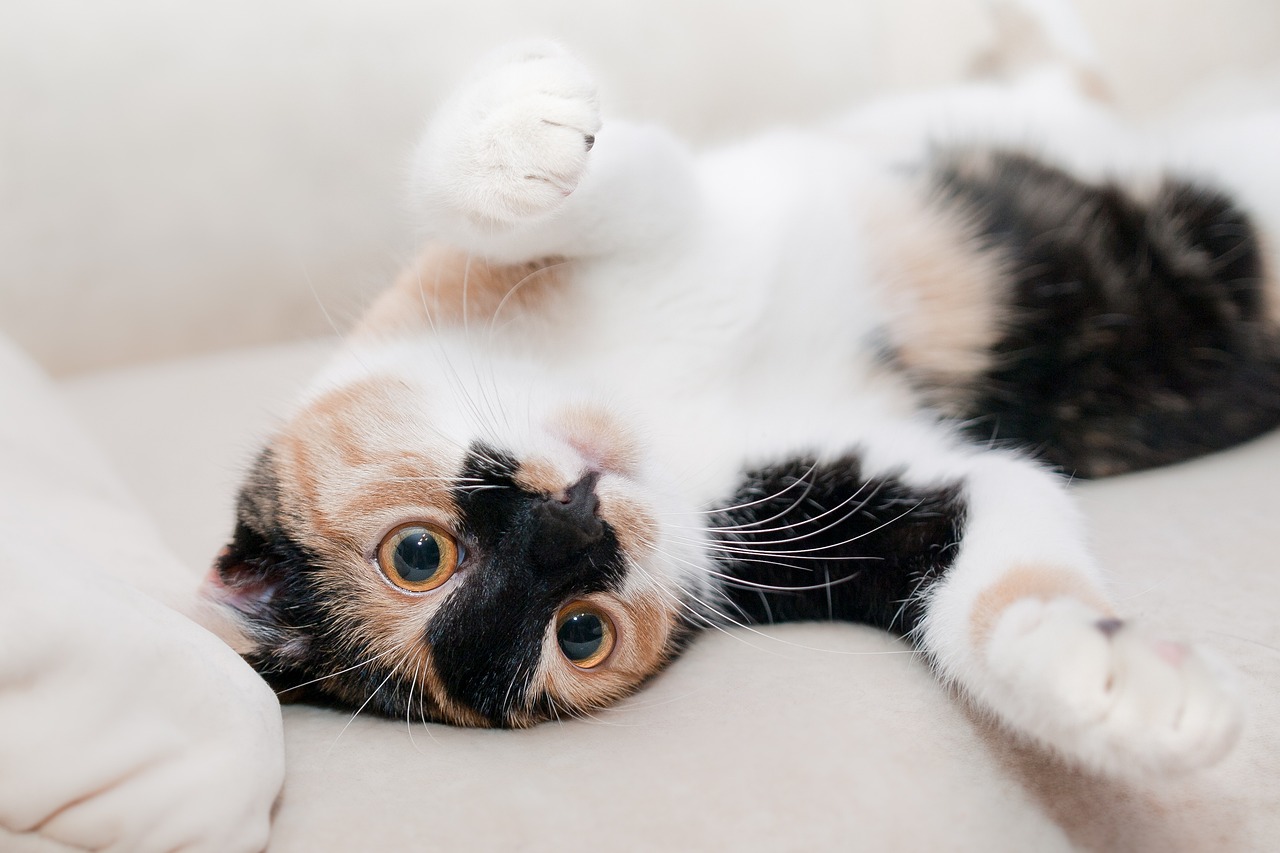
Choosing the Right Type of Food
When it comes to your feline friend, the type of food you choose can be a game changer for their health and happiness. Just like us, cats have different dietary needs based on their age, health conditions, and lifestyle. So, how do you decide between dry, wet, or raw food? Each option has its own set of benefits and drawbacks that can significantly impact your cat's well-being. Let's dive into the nitty-gritty of each food type!
Firstly, dry food is often the most convenient option for cat owners. It’s easy to store, has a long shelf life, and can help keep your cat’s teeth clean due to its crunchy texture. However, it’s essential to ensure that the dry food you choose is high in protein and low in carbohydrates, as cats are obligate carnivores. One downside is that dry food typically contains less moisture, which could be a concern for cats with kidney issues or those prone to urinary tract problems. If your kitty tends to drink less water, dry food might not be the best choice.
On the flip side, wet food is packed with moisture, making it an excellent option for hydration. Many cats find wet food more palatable, which can be beneficial if your furry friend is a picky eater or has dental issues that make chewing dry food difficult. Wet food can also be a great way to incorporate higher protein levels into your cat's diet. However, it's essential to be mindful of the ingredients and nutritional content, as some wet foods can be high in fillers and low-quality meats.
Now, let’s talk about raw food. This diet mimics what your cat would naturally eat in the wild and is often touted for its potential health benefits, including improved coat condition and energy levels. However, raw feeding requires a bit more effort in terms of preparation and ensuring a balanced diet. It’s crucial to source high-quality ingredients and consult with your veterinarian to avoid any nutritional deficiencies or health risks associated with raw diets.
To make an informed decision, consider your cat's specific health needs and preferences. For example, if your cat has a history of urinary tract issues, a wet food diet may be more beneficial. Conversely, if your cat struggles with obesity, a high-protein, low-carb dry food could help manage their weight. Always read labels carefully to ensure the food meets your cat's nutritional requirements.
| Food Type | Benefits | Drawbacks |
|---|---|---|
| Dry Food | Convenient, long shelf life, helps with dental health | Low moisture content, may contain fillers |
| Wet Food | High moisture content, more palatable, higher protein | Can be more expensive, shorter shelf life |
| Raw Food | Mimics natural diet, potential health benefits | Requires careful preparation, risk of nutritional imbalance |
In conclusion, the right type of food for your cat depends on their individual needs, preferences, and any existing health issues. Don’t hesitate to experiment with different types of food to see what works best for your furry companion. Always keep an open line of communication with your veterinarian, as they can provide valuable insights tailored to your cat's specific health requirements.
- What type of food is best for a cat with diabetes? - Cats with diabetes often benefit from a high-protein, low-carb diet. Consult your vet for specific recommendations.
- Can I mix wet and dry food? - Yes, many cat owners choose to mix both types to provide variety and ensure hydration.
- How do I transition my cat to a new food? - Gradually mix the new food with the old food over a week to help your cat adjust without digestive upset.
Specialized Diets for Specific Conditions
When it comes to our furry friends, not all diets are created equal, especially for cats grappling with specific health issues. Just like how a tailor crafts a suit to fit perfectly, a specialized diet is tailored to meet the unique needs of cats with certain conditions. For instance, if your cat has diabetes, it’s essential to choose a food that is low in carbohydrates to help maintain stable blood sugar levels. On the other hand, cats suffering from kidney disease may require a diet that is lower in protein and phosphorus to reduce the workload on their kidneys. This is where the concept of specialized diets comes into play.
Let’s break down some common health conditions and the corresponding specialized diets that can help:
| Health Condition | Recommended Diet | Key Features |
|---|---|---|
| Diabetes | Low-Carbohydrate Diet | High protein, low sugar, and fiber-rich. |
| Kidney Disease | Renal Diet | Lower protein, low phosphorus, and increased moisture. |
| Urinary Tract Issues | Urinary Health Diet | Formulated to dissolve crystals and promote urinary tract health. |
| Obesity | Weight Management Diet | Reduced calories, high fiber, and balanced nutrients. |
Choosing the right diet can feel overwhelming, but understanding your cat’s specific needs is the first step in making informed decisions. For example, if your cat is prone to urinary tract issues, a diet that promotes urinary health can make a significant difference. These foods often contain ingredients that help dissolve crystals and prevent future occurrences. Similarly, if your cat is overweight, opting for a weight management diet can aid in healthy weight loss and prevent related complications.
It's important to remember that these specialized diets are not just a one-size-fits-all solution. Each cat is unique, and their dietary needs can vary based on their age, weight, activity level, and specific health issues. Therefore, it’s wise to consult with your veterinarian to determine the best course of action for your feline companion. They can recommend specific brands and formulations that align with your cat’s health condition, ensuring that your furry friend receives the best possible care.
In summary, specialized diets are a crucial aspect of managing your cat’s health issues. By understanding the dietary requirements associated with various conditions, you can help your cat lead a healthier, happier life. Remember, the right food can be the difference between a healthy cat and one that struggles with chronic health problems.
- What should I do if my cat refuses to eat the specialized diet?
It's not uncommon for cats to be picky eaters. If your cat refuses to eat the new diet, consult your veterinarian for alternative options or gradual transitioning methods. - Can I mix specialized food with regular cat food?
Mixing foods can sometimes lead to digestive issues or imbalanced nutrition. Always check with your veterinarian before making any changes. - How long does it take to see improvements after changing my cat's diet?
Improvements can vary based on the condition and individual cat. Generally, you should start noticing changes within a few weeks, but it's essential to follow up with your vet for ongoing assessment.
Reading Labels and Ingredients
When it comes to choosing the right food for your cat, understanding labels and ingredients is absolutely crucial. Just like we read nutrition labels on our food to make informed choices, you need to do the same for your feline friend. Pet food labels can often seem like a foreign language, filled with technical jargon and confusing terms. However, once you break it down, it becomes much easier to navigate. So, let’s dive into the essentials!
First and foremost, look for the ingredient list. Ingredients are listed in descending order by weight, meaning the first few items are the most significant in terms of quantity. Ideally, you want to see a high-quality protein source, such as chicken, turkey, or fish, listed as the first ingredient. This is especially important for cats, who are obligate carnivores and thrive on animal protein. If you see vague terms like "meat by-products" or "animal digest," it might be a red flag. These terms can indicate lower quality ingredients that may not provide the necessary nutrition your cat needs.
Next, pay attention to the guaranteed analysis section, which provides a breakdown of the food’s nutritional content. This includes the percentage of protein, fat, fiber, and moisture. For instance, a good cat food should contain at least 30% protein and a moderate level of fat. However, the exact percentages can vary based on your cat's specific health needs. For example, a cat with kidney issues might require a diet lower in protein. Understanding this section can help you gauge whether the food meets your cat's dietary requirements.
Another important aspect is the presence of additives and preservatives. While some preservatives are necessary to keep the food fresh, artificial additives can be harmful. Look for natural preservatives like tocopherols (vitamin E) instead of BHA or BHT. Additionally, be cautious of fillers such as corn and soy, which provide little nutritional value and can lead to allergies in some cats.
To further assist you in understanding what to look for, here’s a quick table summarizing key components to consider:
| Component | What to Look For | What to Avoid |
|---|---|---|
| Protein Source | Named animal proteins (e.g., chicken, turkey) | Meat by-products, vague terms like "animal meal" |
| Fat Content | Moderate levels (check guaranteed analysis) | Excessive fat, unspecified sources |
| Additives | Natural preservatives (e.g., tocopherols) | Artificial preservatives (e.g., BHA, BHT) |
| Fillers | Whole grains (if your cat tolerates them) | Corn, soy, and other low-nutrition fillers |
Finally, consider the brand reputation. Research the company behind the food. Are they transparent about their sourcing? Do they conduct regular quality checks? A reputable brand will be proud to share this information. Reading reviews and seeking recommendations from your veterinarian can also provide valuable insights into which brands are trustworthy.
In summary, being a savvy cat food shopper requires a bit of effort, but understanding how to read labels and ingredients can make a significant difference in your cat's health. By choosing high-quality ingredients and being mindful of what you’re feeding your furry friend, you’re setting them up for a happier, healthier life.
- How can I tell if my cat has food allergies? Look for signs like itching, gastrointestinal upset, or changes in behavior. Consulting with your vet is crucial for proper diagnosis.
- Is grain-free food better for my cat? Not necessarily. Some cats do well on grain-free diets, while others may thrive on foods that contain grains. It depends on the individual cat.
- Should I switch my cat's food gradually? Yes, it's best to transition slowly over a week to avoid digestive upset.
- How often should I feed my cat? Most adult cats do well with two meals a day, but kittens may require more frequent feeding.
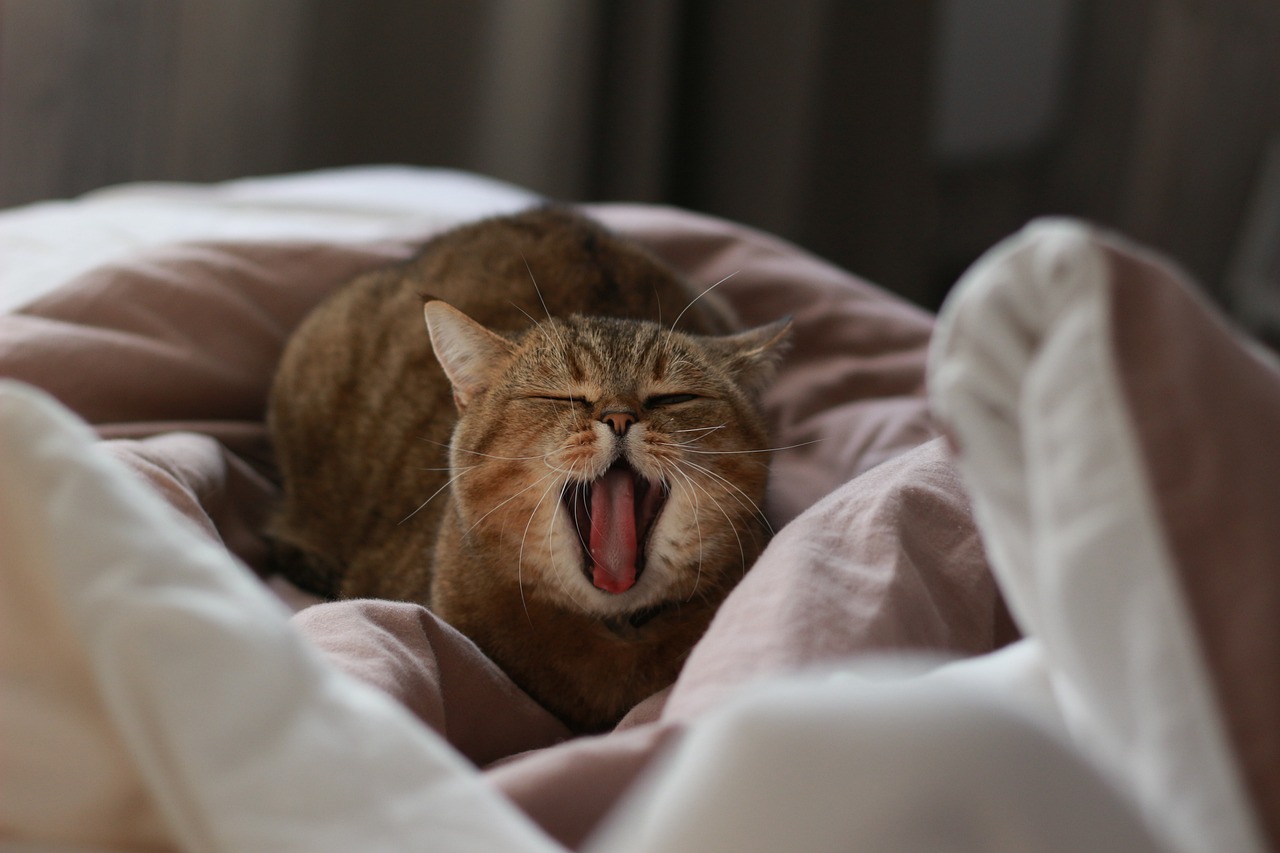
Monitoring Your Cat's Response to Food
Once you've made the important decision to change your cat's diet, the next step is to closely monitor how they respond to the new food. This process is crucial because it helps you determine whether the diet is truly beneficial for your feline friend. Just like humans, cats can have varying reactions to different types of food, and what works for one might not work for another. So, how do you keep an eye on your cat's response? Let's dive in!
First, start by observing your cat's behavior and physical condition. Is your cat more energetic, or are they still lethargic? Are they playing more often, or do they seem to be hiding away? These behavioral changes can offer significant clues about how they are adapting to their new diet. For instance, if you notice that your cat is more active and playful, it could indicate that the new food is providing them with the energy they need. On the other hand, if they are becoming increasingly withdrawn, it might be time to reconsider the food choice.
Next, pay attention to your cat's appetite. A sudden increase or decrease in appetite can be a sign that the food is not meeting their nutritional needs. If your cat is leaving food in their bowl, it may mean they are not enjoying it or that it doesn't agree with them. Conversely, if they are finishing their meals quickly and begging for more, it could be a sign that the food is not filling enough or they are not getting the right balance of nutrients.
Another important aspect to monitor is your cat's litter box habits. Changes in bowel movements can indicate how well your cat is digesting the food. For example, if you notice a significant change in the consistency or frequency of their stools, this could suggest that the new diet is either too rich or not suitable for their digestive system. Keeping a close eye on these details can help you make informed decisions about their food.
Additionally, consider keeping a food diary. Documenting what your cat eats, along with any noticeable changes in their behavior or health, can help you identify patterns over time. This can be particularly useful when discussing your cat's diet with your veterinarian, as they will appreciate the detailed information you've gathered.
Lastly, don't hesitate to reach out to your veterinarian if you have any concerns. They can provide valuable insights and recommendations based on your observations. Remember, your cat's health is paramount, and monitoring their response to food is an essential part of ensuring they thrive.
- How long should I monitor my cat after changing their food?
It's recommended to monitor your cat for at least 2-4 weeks after introducing a new diet to see how they adapt. - What signs should I look for to know if the food is working?
Look for increased energy, a healthy appetite, normal bowel movements, and a generally happy demeanor. - When should I consult a veterinarian about my cat's diet?
If you notice any concerning changes in behavior, appetite, or litter box habits, it’s best to consult your veterinarian.
Frequently Asked Questions
- What are the common health issues in cats that affect their diet?
Common health issues include diabetes, kidney disease, allergies, and obesity. Each of these conditions can significantly alter your cat's nutritional needs, making it essential to choose food that supports their specific health requirements.
- Why is it important to consult a veterinarian when choosing cat food?
Consulting a veterinarian is crucial because they can accurately diagnose health issues and provide tailored dietary recommendations. This ensures that your cat receives the right nutrients to manage their condition effectively.
- How can I identify if my cat has a health issue that requires dietary changes?
Look out for behavioral changes such as increased aggression or lethargy, as well as physical symptoms like weight loss, changes in appetite, or vomiting. Recognizing these signs early can lead to timely interventions.
- What diagnostic tests are commonly used for cats with health issues?
Common diagnostic tests include blood tests, urinalysis, and ultrasound examinations. These tests help identify underlying health problems and inform dietary decisions tailored to your cat's needs.
- What type of food is best for cats with health issues?
The best type of food depends on the specific health issue. For instance, wet food may be beneficial for cats with kidney disease due to its higher moisture content, while specialized diets are available for conditions like urinary tract health.
- How do I read pet food labels to make informed choices?
Start by checking the ingredient list and ensure that high-quality proteins are listed first. Look for specific nutritional information and avoid foods with fillers or artificial additives. Understanding these labels helps you select the best food for your cat's health.
- How can I monitor my cat's response to a new diet?
Monitor your cat's behavior, weight, and overall health after introducing a new diet. Keep an eye on their energy levels, appetite, and any physical symptoms. If you notice any adverse reactions, consult your veterinarian for further guidance.

